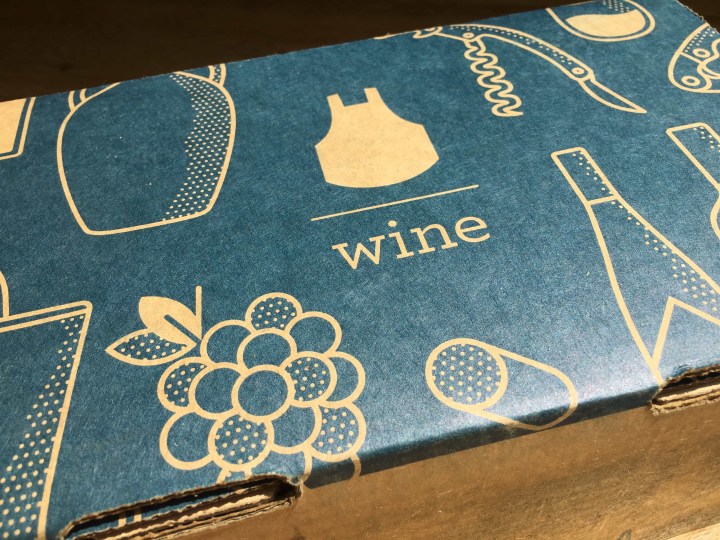
Blue Apron Wine is a subscription for people who love trying new wines as much as they love great food. You may be familiar with the Blue Apron Meal Delivery Kit subscription, which sends boxes of fresh ingredients to make exciting meals at home. The wine subscription is separate from the meal subscription, but it’s designed to complement it.
Here’s how it works: every month, for about $11 per bottle ($65.99/month, including shipping and tax), Blue Apron sends you 6 bottles of wine, plus tasting notes and pairing recommendations. The wines are selected to pair perfectly with the meals in the Blue Apron kits. The bottles are 500 ml, or 2/3 the size of a standard bottle, which, in addition to being adorable, means that you and your dining partner can enjoy your entire bottle with your meal without regretting that additional glass needed to finish a standard-sized bottle.
Blue Apron pairs with wineries around the world to bring a wide range of new and interesting wines to you each month. I love wine, and I love food, and I love everything about the idea of this subscription.

The new packaging is great and keeps everything snug and secure. Keep in mind that someone 21+ will need to sign for it. Everything is in great shape when it arrives, and the packaging remains, happily, recyclable cardboard.
Blue Apron Wine allows you to select your wines–you can go all white, red, or mix it up. I do wish there were sparkling wine options occasionally. As you can see, I gobbled up all of the rosés on offer this month.
DEAL: You can try out your first box of Blue Apron dinners for $30 off with this link.
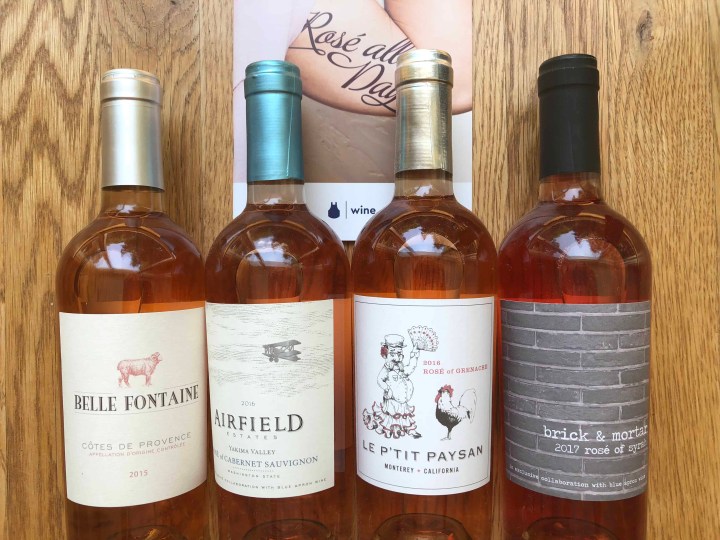
If you’re wondering what a 2/3-sized bottle looks like, here is one of the bottles with a standard-sized bottle next to it. You’ll get about 3 1/2 standard glasses in a bottle, or a generous pour plus a top-off each if you’re with a partner.
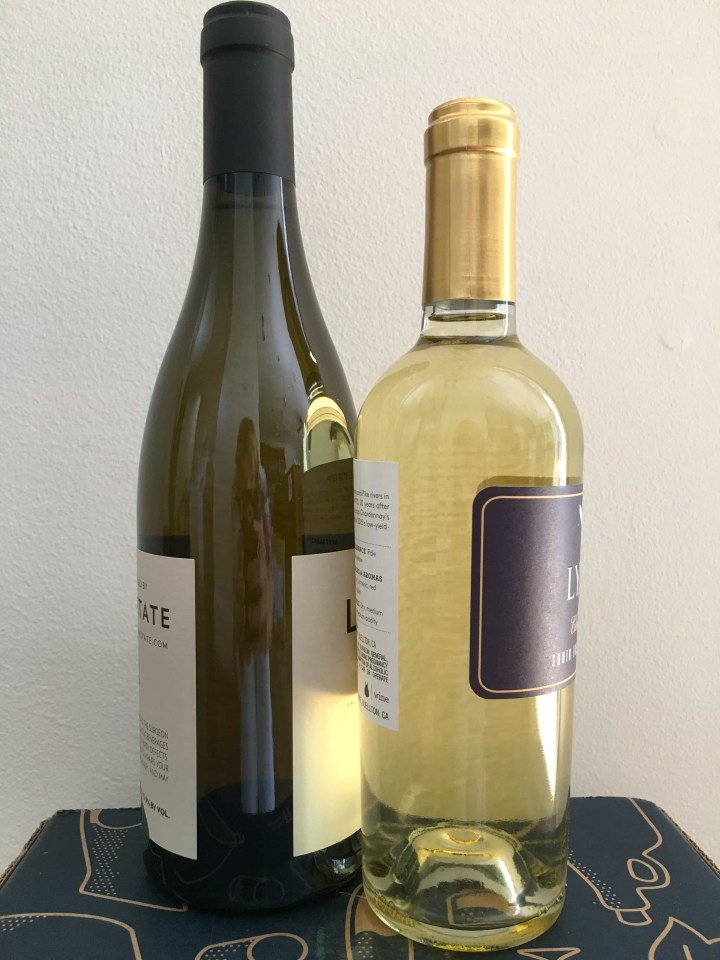
Each box comes with a great collection of tasting notes. Blue Apron tells you a little bit about the winery and how the bottle was made, plus the region at large. Because, come on, you didn’t REALLY know where the Central Coast was, did you? The info details the color, body, and structure of the wine, and also gives some thoughtful food pairings for each bottle. The info is terrific – wine is not scary, and tasting it should be fun and informative. Data is your friend.
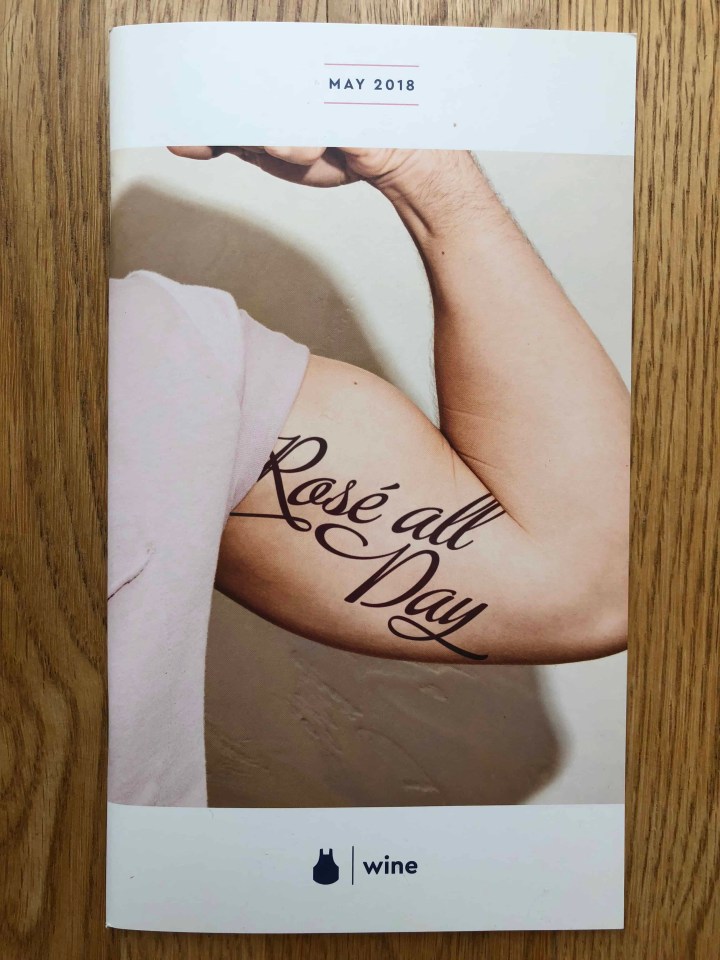
It’s May! I have been waiting, not very patiently, for the endless winter and winter-like spring to end, but now it is summer in the South, and that means I can drink all of the rosé. Oh, yes, it’s a total cliché, but rosé really is a lovely summer wine. It’s easy, undemanding, goes with lots of food, and is terrific to drink while sitting on a porch or next to a pool. So it was no sacrifice to select all four rosés offered this month to try them out for you (plus 2 Spanish reds for fun). Let’s go out onto the porch, shall we?

First up is the classic rosé, the 2015 Belle Fontaine from Provence, France. Provence rosés are light in color and body, crisp, dry, and refreshing. They’re what I reach for when I buy rosé.
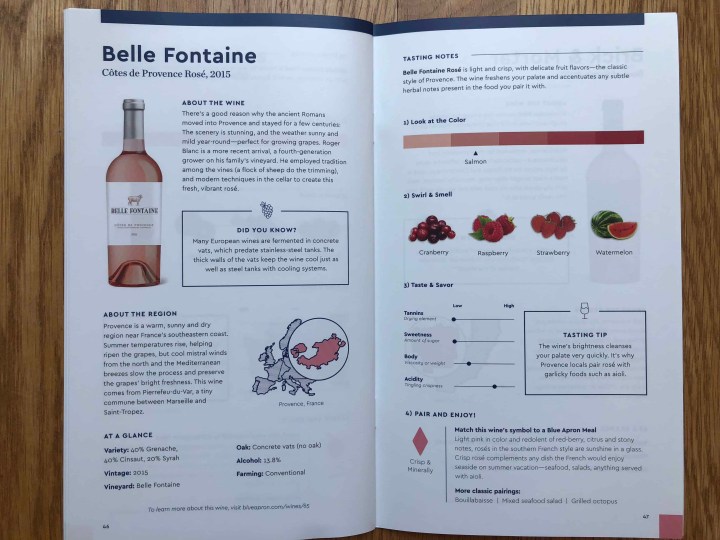
The Belle Fontaine (which is widely available in retail stores) is typical of a Provence rosé, with a pale pink color (not the salmon claimed in the tasting notes, I don’t think), a fruity nose, and a clean, quick flavor. There’s some berry here, with a hint of minerality at the back to leave your palate clean and ready for another sip. This one is a hair fruitier than I prefer in my Provence rosés, but it is pretty well-balanced and will certainly appeal to a crowd. Serve this rosé with light foods (apps, crudite, salmon, etc.) and a solid chill.
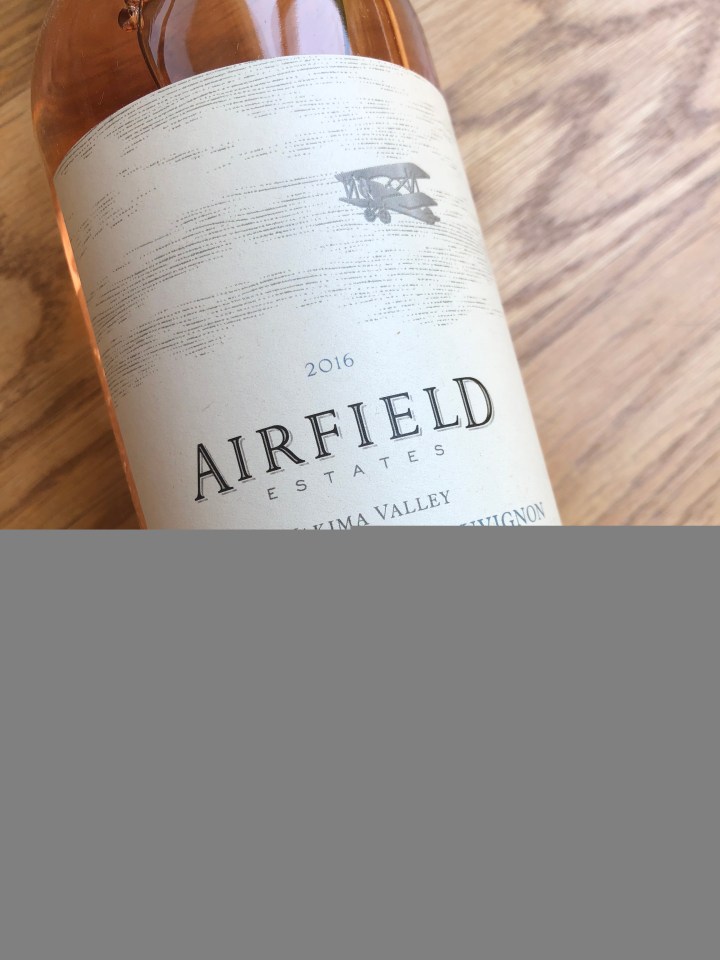
Our second rosé is from Washington State, the 2016 Airfield Estates Rosé of Cabernet Sauvignon.
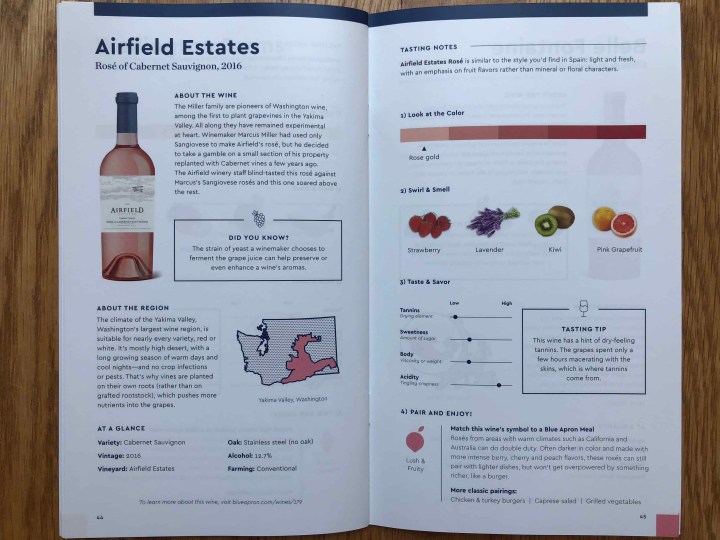
This is a much different rosé than the lean Provence style–it’s more a light red than a dark white. It’s salmon-colored (again, not as depicted in the notes), with a big nose of sweet fruit. I’m not a huge fan of sweet wines, and this one is definitely sweetish, but it also has a bit of structure from the Cab and a lot of acidity, so the sweetness isn’t overwhelming. This was much more elegant than I was expecting it to be. Because it’s heavier than a Provence rosé, the Airfield Estates would hold its own with heavier backyard food, like a burger. We served this pretty cold to take the edge off the sweetness, but if you like that, let it warm up in your glass a bit and enjoy.
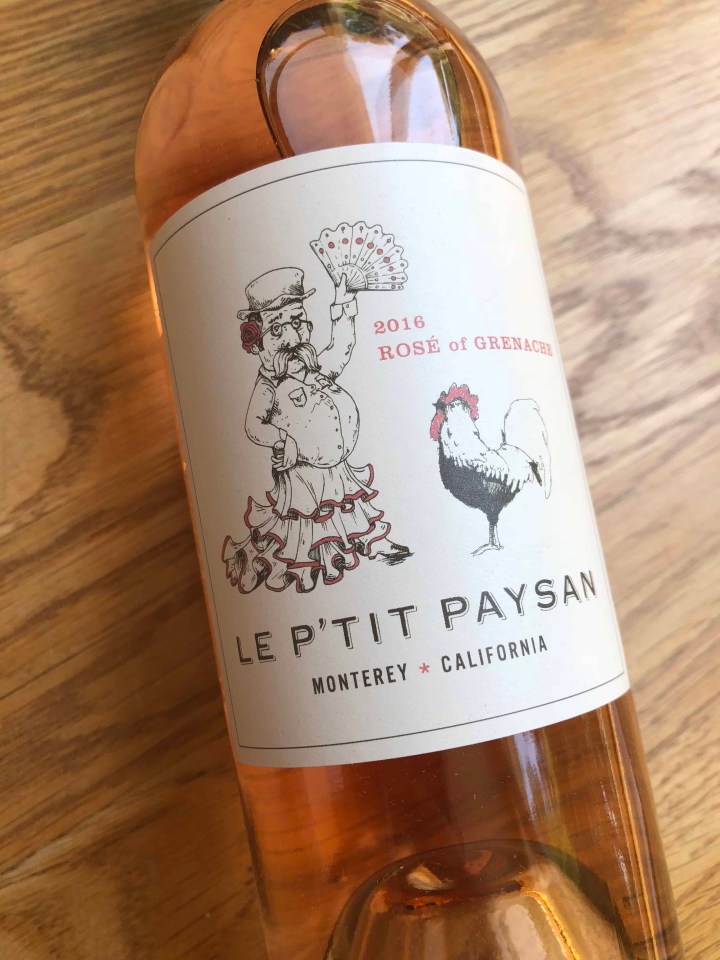
On to California for our third rosé, the 2016 Le P’tit Paysan Rosé of Grenache. This bottling is a Blue Apron Wine mainstay. This rosé, with a light salmon color and zippy acidity, splits the difference between the leaner Belle Fontaine and the fruitier Airfield Estates. There is a definite nose and flavor of berry to lead off, but it quickly takes on a mineral/herbal flavor and finishes very cleanly. This was an interesting wine with a definite presence. We had a little trouble matching it with a food, but we decided grilled chicken would be the best bet. A good chill suits this wine.
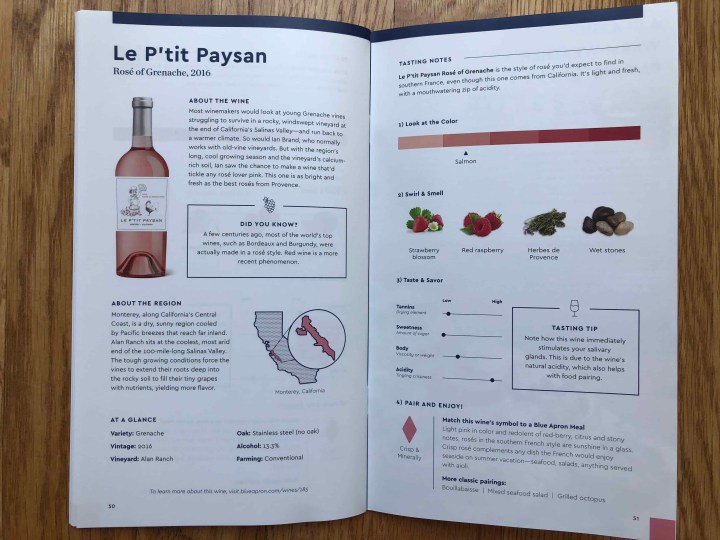
Last up to the rosé party is the gorgeous 2016 Brick and Mortar Rosé of Syrah from Lodi, California. Doesn’t this beautiful color just call out for it to be frozeed? Yum.
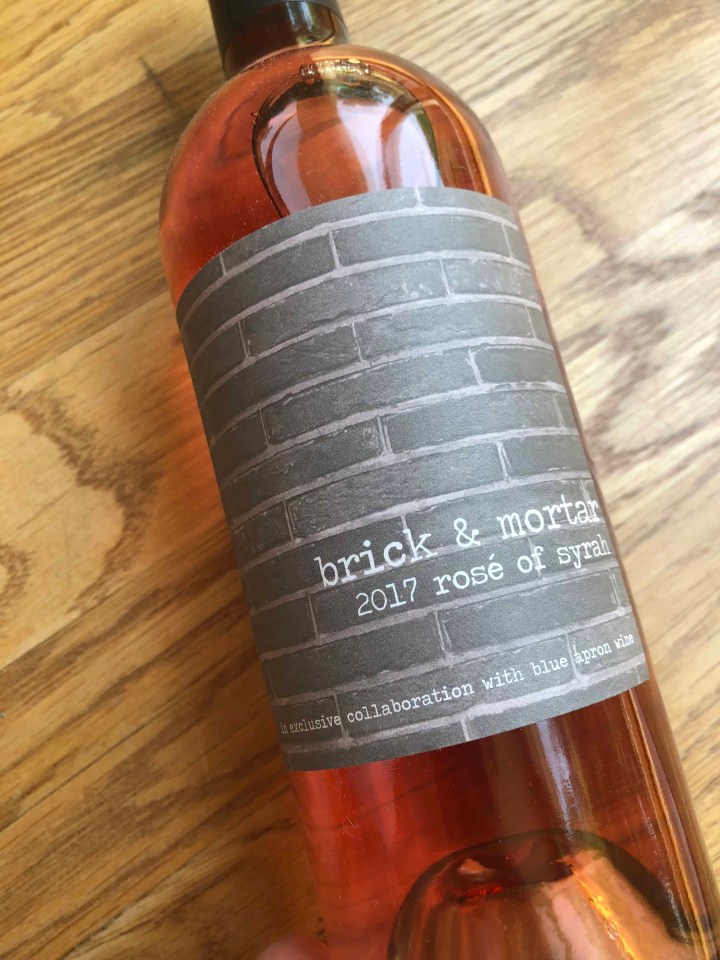
This watermelon-colored wine has a huge (you guessed it) watermelon nose, and that flavor just explodes into the foreground of the flavor. But! There’s a secret here, and that secret is a pile of wet rocks that are waiting to hit you with a tannic bite to the end of your sip. There’s a good dose of acidity to the flavor, too, and the result is a bold-but-balanced rosé that your red-wine-only friends will definitely enjoy. Try this chilled with barbecue.
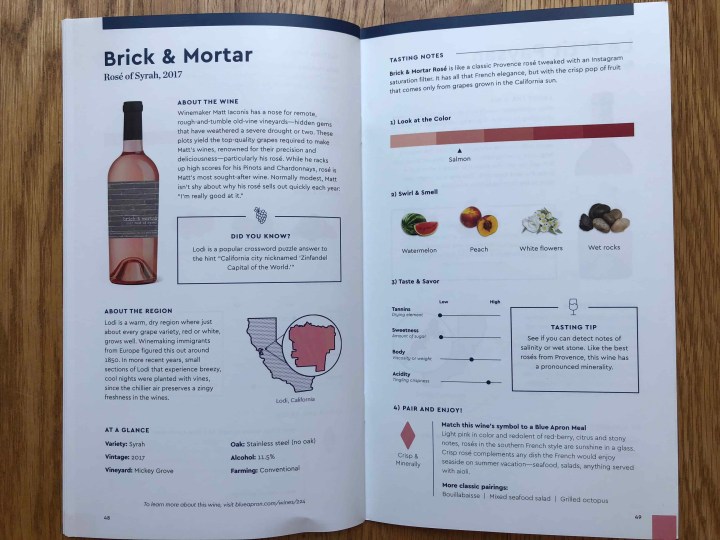
The rosé tasting was super fun, but we also got a couple of bottles of red to balance all that ebullience. First is a heavy hitter, the 2014 Cibolo Monastrell.
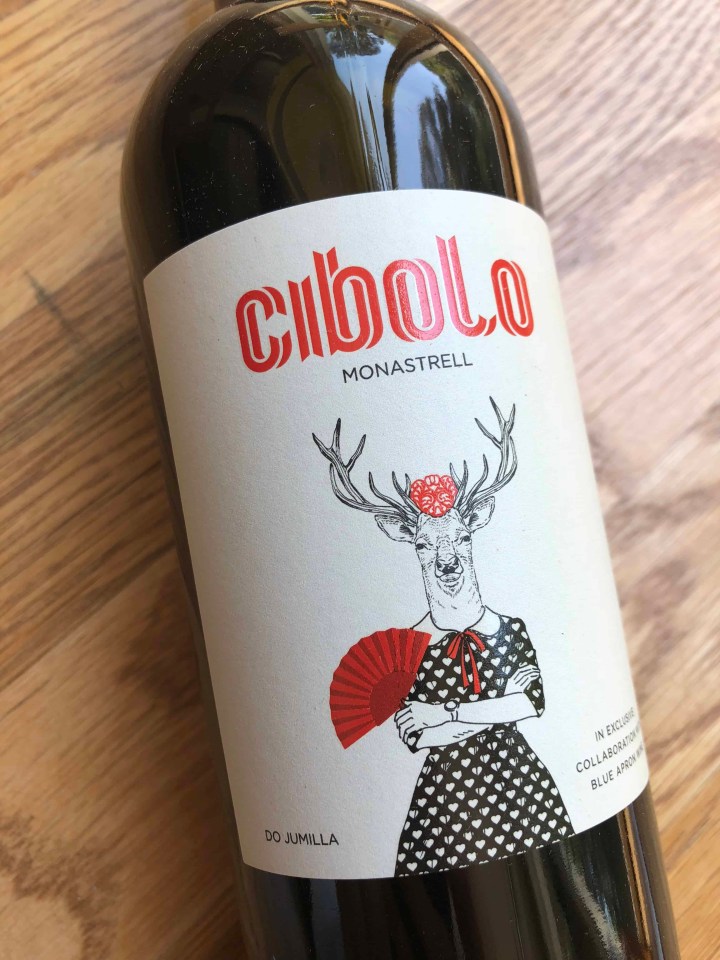
We tried out a Monastrell last month, too, the Almez. This one is a bit warmer than that, with more spice and depth to the flavor. It is basically the opposite of a rosé–dark purple, with a medium-high body and a hammer of tannins. It’s not really my style, but I appreciated the contrast to the rosés. The Cibolo would go nicely with a good roast or short ribs. Serve it at cool room temperature.

Last up was another Spanish red, the 2014 Alma Gitana Grenache. I love a good Grenache for the spicy dark fruit and anise flavors it brings to a glass. It also plays nicely with a lot of foods, so it’s a good one for a dinner party menu.

The Alma Gitana has the same dark purple color as the Cibolo, but with a lighter nose of dark fruit and oak. It was a bit heavy in the glass but clocks in with a moderate ABV of about 13.6%. The fruit and oak carry through in the flavor, with a hint of minerality that is gone as soon as you notice it. The finish is long and oaky. This was a bit heavier than I expected it to be, but it would be a good match for a grilled pork chop or a burger (with swiss cheese!). I’d serve this at cool room temperature.

Well, that was a fun box for May! It was neat to get to try so many varieties of rosé in one place. Next month, I’ll offer some suggestions of what to serve when you can’t stand any more rosé. (As if!)
By the way, Blue Apron has an easy system for pairing its wines and its food subscriptions, somewhat like you might have seen in nicer grocery stores — the wines are categorized by type (crisp & minerally, plush & fruity, etc.) and then that symbol shows up on the food recipes. Pair any wine of the recommended type to the food, and voila — you have a great meal!
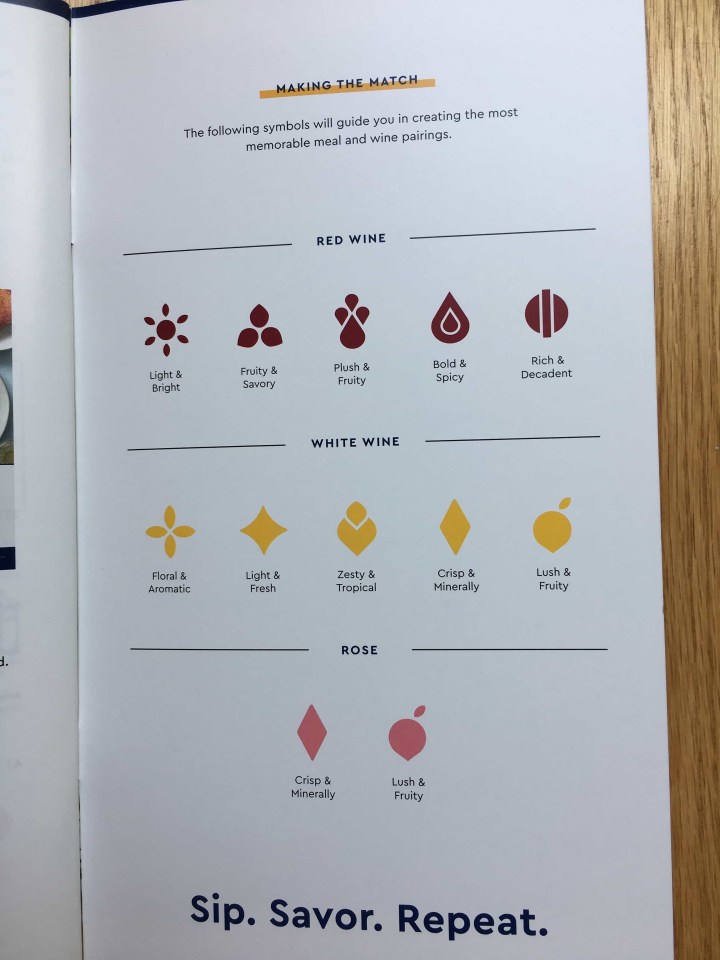
Have you tried Blue Apron Wine? What’s your favorite rosé? Tell us in the comments below!




Comments